Traffic Sign
A traffic sign is a device that is installed on a fixed or portable support and conveys a specific message using words or symbols. Traffic signs should be set in such a way that they are easily seen and recognized by road users.
Classification of Signs
Traffic sign are divided into 3 categories.
- Regulatory/Mandatory Signs
- Warning Sings
- Informatory Sign
There are three basic types of traffic sign: signs that give orders, signs that warn and signs that give information. Each type has a different shape. Circles give orders, Triangles warn and Rectangles inform.

A further guide to the function of a sign is its color. Blue circles give a mandatory instruction, such as “Compulsory Turn Left” etc. Blue rectangles are used for information signs. All triangular signs are red.
There are a few exceptions to the shape and color rules, to give certain signs greater prominence. Examples are the “STOP” and “GIVE WAY”.
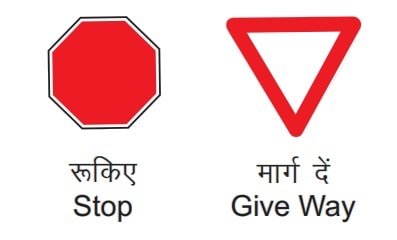
Regulatory / Mandatory Signs
Regulatory or Mandatory signs are used to educate road users of specific laws and regulations in order to ensure traffic safety and flow. Violating these signs is a criminal offence.
Shape → Circular (Few exceptions to the shape and colour rules. Examples are the “STOP” and “GIVE WAY”.)
The Regulatory signs are classified under the following sub-heads:
- Stop and Give-way signs
- Prohibitory signs
- Speed Limit and Vehicle Control Signs
- No Parking and NO Stopping signs
- Compulsory Direction Control and Other Signs
- Restriction Ends sign
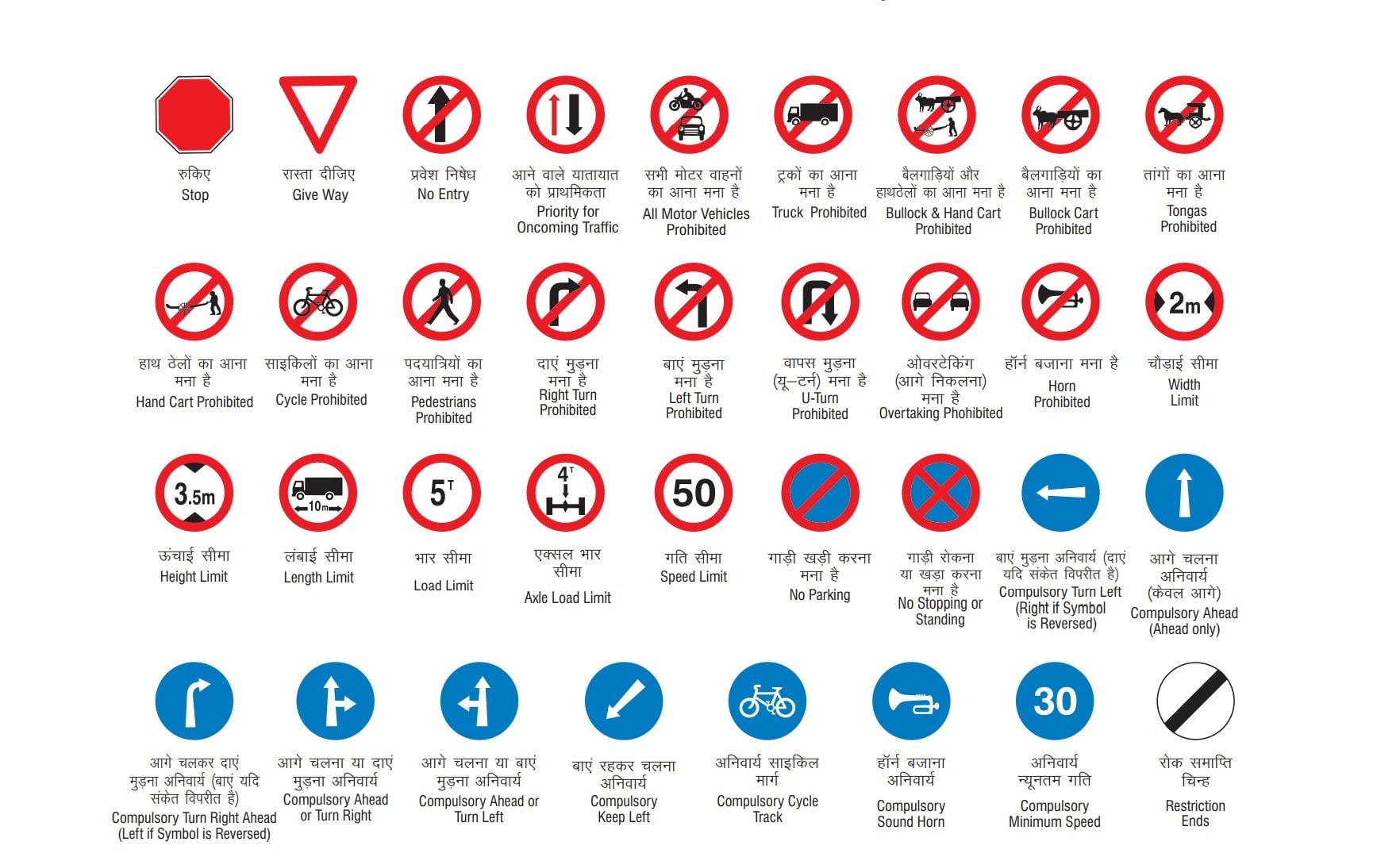
Warning/ Cautionary Sings
These signs are used to advise road users of upcoming road conditions at a suitable distance in advance. Warning signs are also known as cautionary signs. The warning signs are shaped like an equilateral triangle with an upward pointing apex.
Shape → Triangle
The symbols are black and have a white background with a red border.
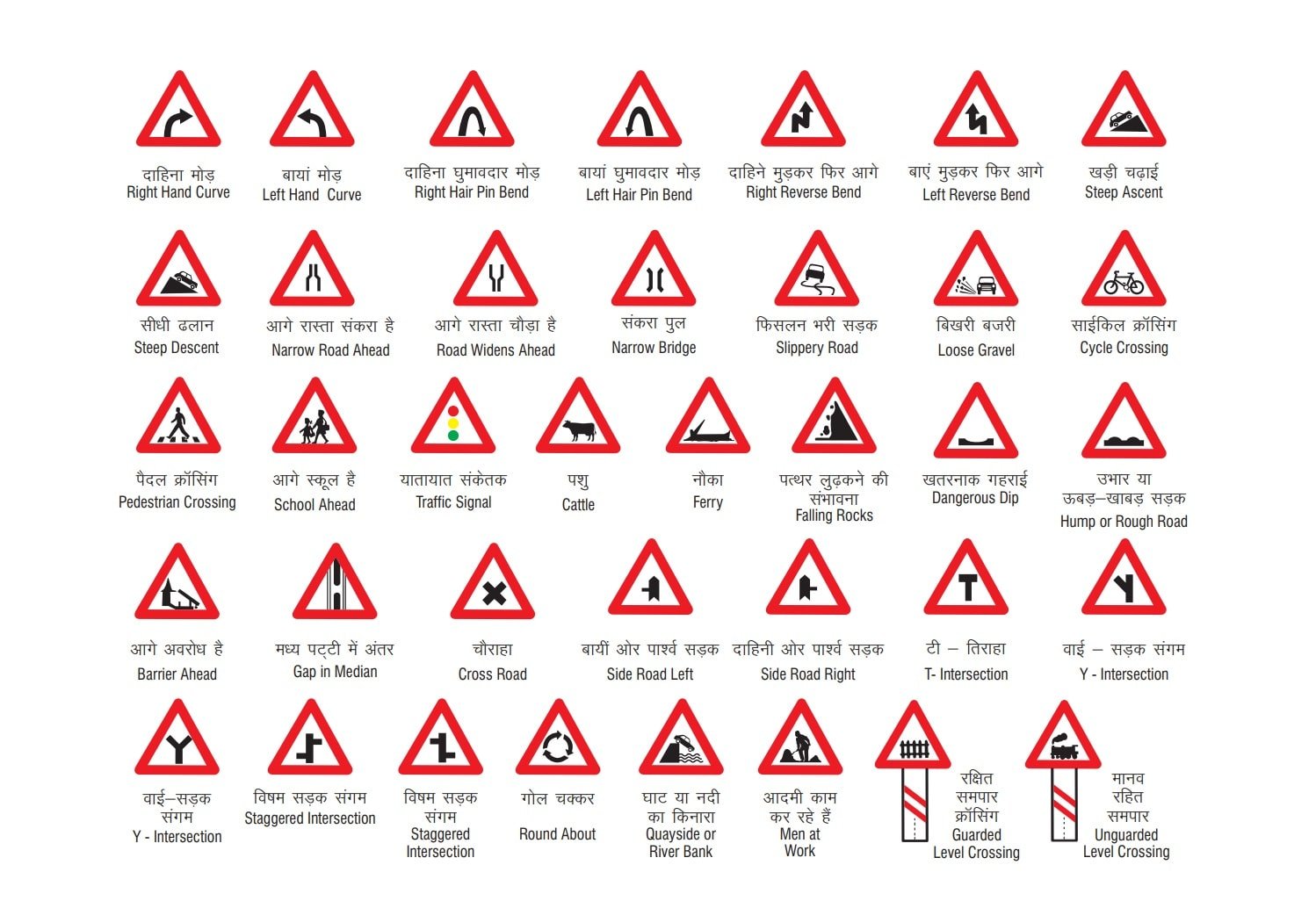
Informatory Sign
Informatory signs are provided to guide the road users about the routes, destination, direction, roadside facilities which make travel easier, safe and pleasant.
Shape → Rectangular
The Informatory Sign are classified under the following sub-heads:
- Direction and Place Identification signs
- Facility Information signs
- Other Useful Information signs
- Parking sings
- Food Gauge
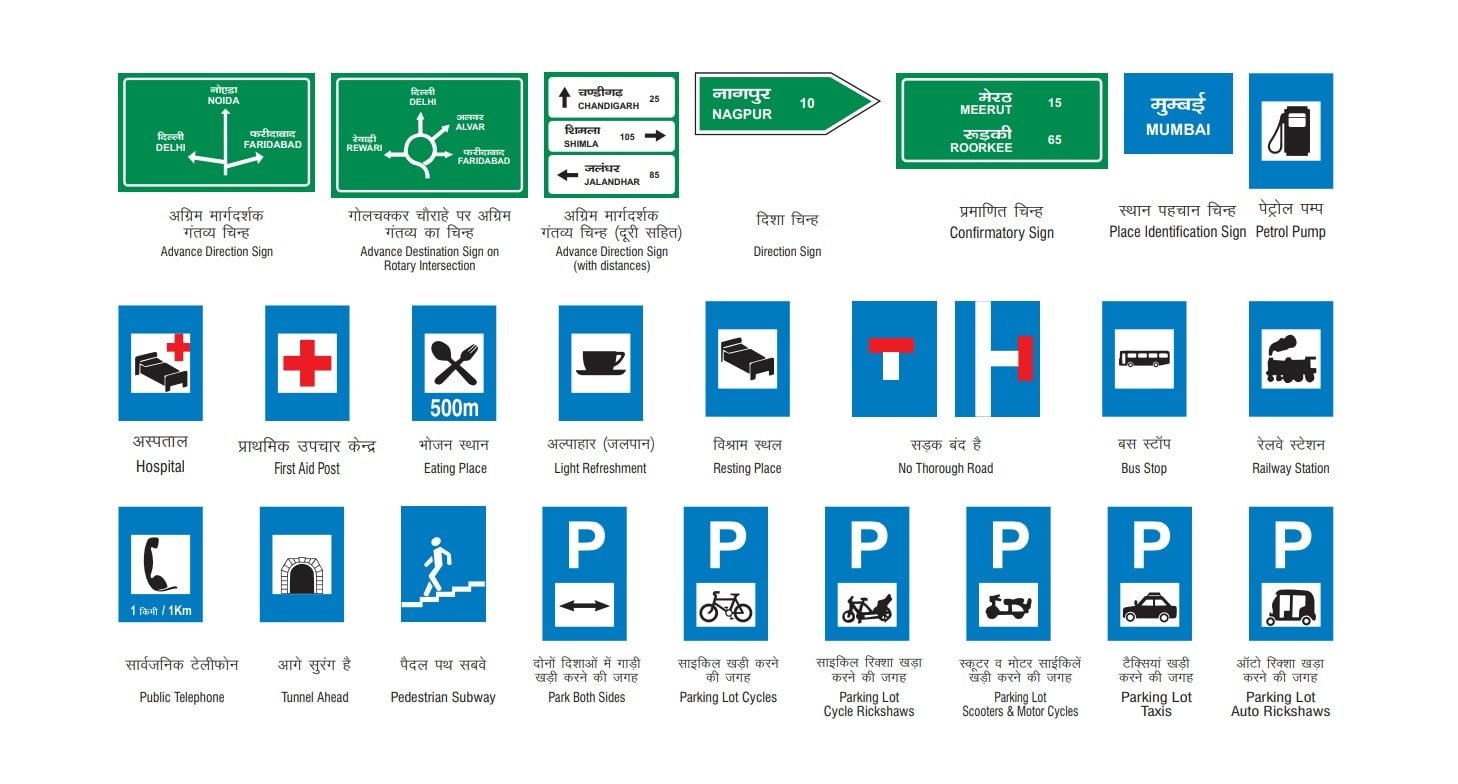
IRC recommendations for the design of traffic signs:
- On high-speed routes, put up large signage.
- Use no more than three words.
- Reflectize of illuminate the signs to be read at night.
- The size of the letters on the sign and the speed of the cars will determine where the signs are placed.
- Two signs for different purposes should not be placed on the same sign post and should, if possible, be separated by at least 30 meters.
- Location of the signs with respect to the carriageway.
Road Marking
Road marking or traffic markings are made of lines, patterns, words, symbols or reflectors on the pavement, kerb, sides of islands or on the fixed objects within or near the roadway. A road marking is a safety device used on a road. Traffic markings may be called special signs intended to control, warn, guide or regulate the traffic. The markings are made using paints in contrast with color and brightness of the pavement or other back ground. Light reflecting paints are also commonly used for traffic marking. In order to ensure that the markings are seen by the road users, the longitudinal lines should be at least 10 cm thick and the transverse lines should be made in such a way that they are visible at sufficient distance in advance to give road users adequate time to respond.
Functions of Road Markings
The main functions of the road markings are to guide the safe and smooth flow of traffic in the
following ways:
- Segregation of traffic
- Stop and Go
- Give way instruction
- Overtaking or not
- Two lanes to one lane/ lane traffic
- Inter-vehicle distance
- Parking zone or no parking
- Speed indication
- Direction
- One way
- Pedestrian crossing
- Type of vehicles allowed
Types of Road Marking
The various types of markings may be classified as,
- Pavement Marking
- Kerb Marking
- Object Marking
- Reflector Unit Marking
Pavement Marking
- Pavement markings are made generally with white color & yellow color marking are used to indicate parking restriction. Some of the common types of pavement marking are given below:
Centre Lines
- These are meant to separate the opposing streams of traffic on undivided two-way roads.
Lane Line
- Lines are drawn to designate traffic lanes. These are used to guide the traffic and to properly utilize the carriageway.
Edge Lines
- Indicate carriageway edge of rural road which have no kerb stones along edge.
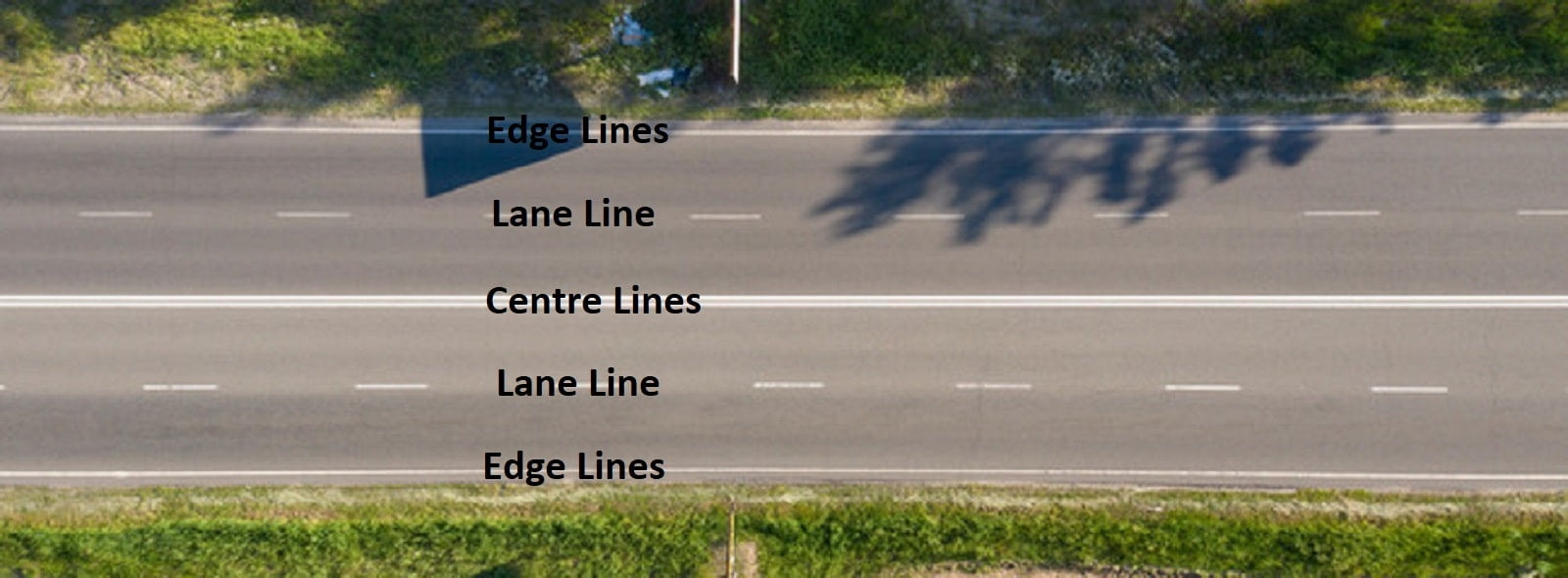
No Passing Zone Marking
- These are marked to indicate that overtaking is not permitted.
Turn Markings
- These are useful near intersection to designate proper lateral placement of vehicles before turning to the different directions.
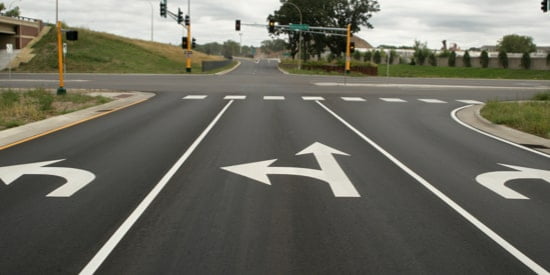
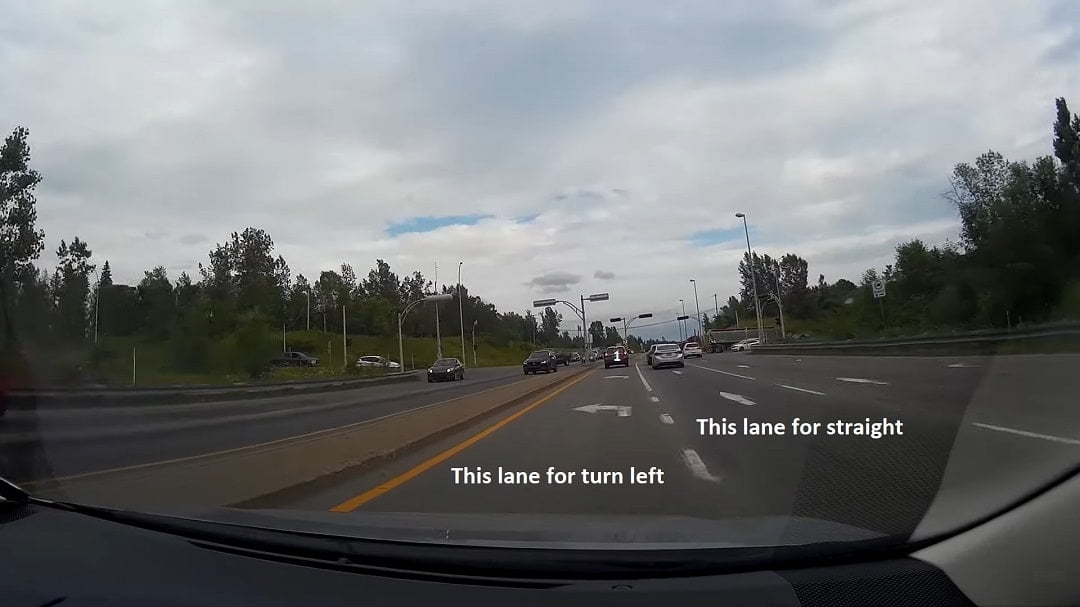
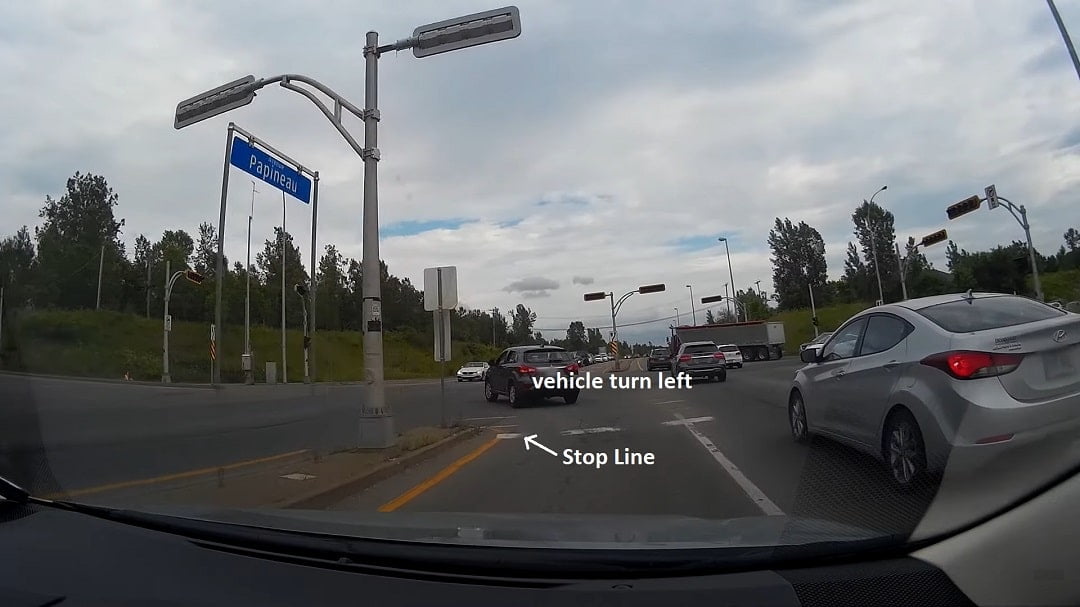
Stop Line
- These are meant for vehicles to stop near the pedestrian crossing, signalized intersection etc. where the vehicles have to stop and proceed.
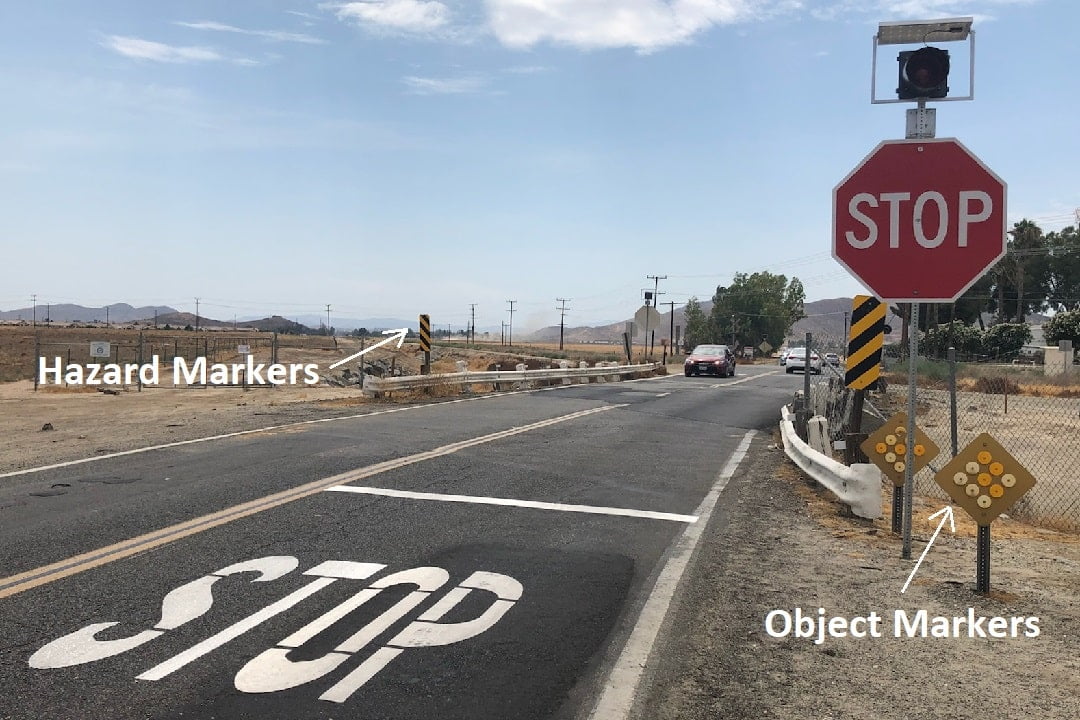
Crosswalk Lines
The particular places where pedestrian are to cross the pavement are properly marked by the pavement markings. The width of pedestrian crossing may be between 2.0 and 4.0 m depending on local requirements.
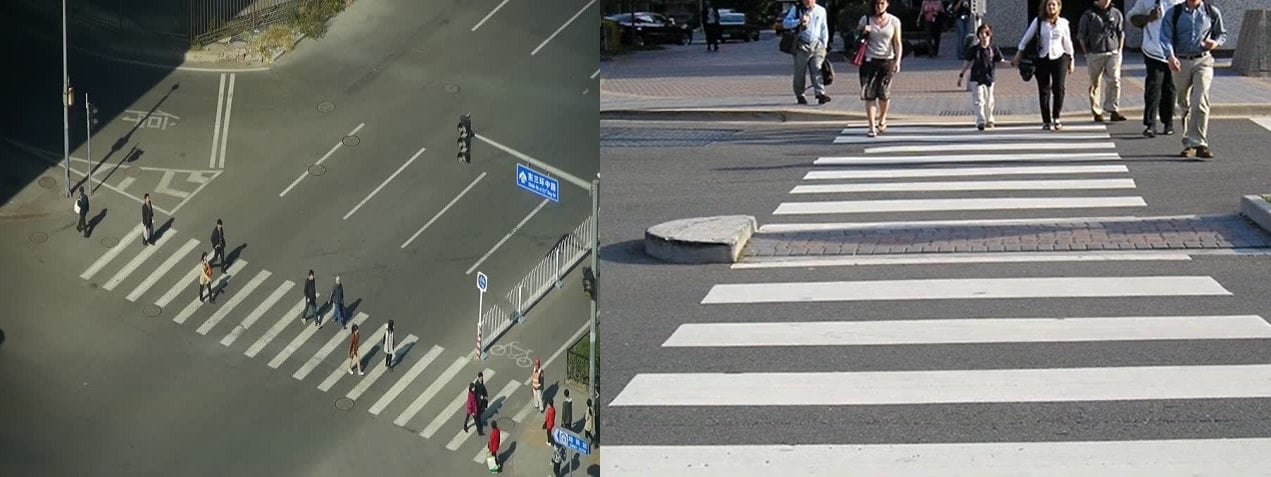
Bus Stops
The pavement space meant for bus stop is also marked by the word ‘BUS'(by yellow color).

Kerb Marking
These may indicate certain regulations like parking regulations. Also the markings on the kerb and edges of islands with alternate black and white line increase the visibility from a long distance.
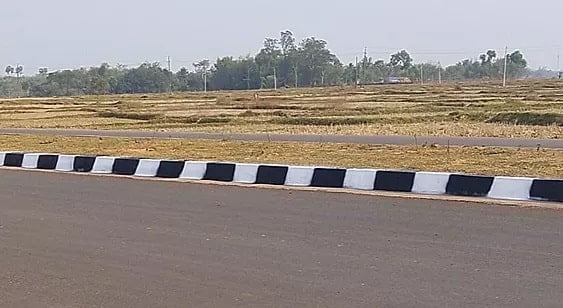
Object Marking
Physical obstruction on or near the roadway are hazardous and hence should be properly marked. Typical obstructions are supports for bridge, signs and signals, level crossing gates, traffic islands, narrow bridges, culver head walls etc.
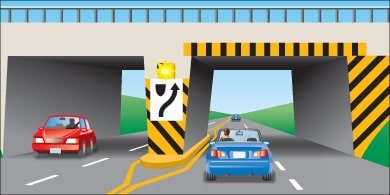
Reflector unit marking
Reflector markers are used as hazard markers and guide markers for safe driving during night. Hazard markers reflecting yellow light should be visible from a long distance of about 150 m.
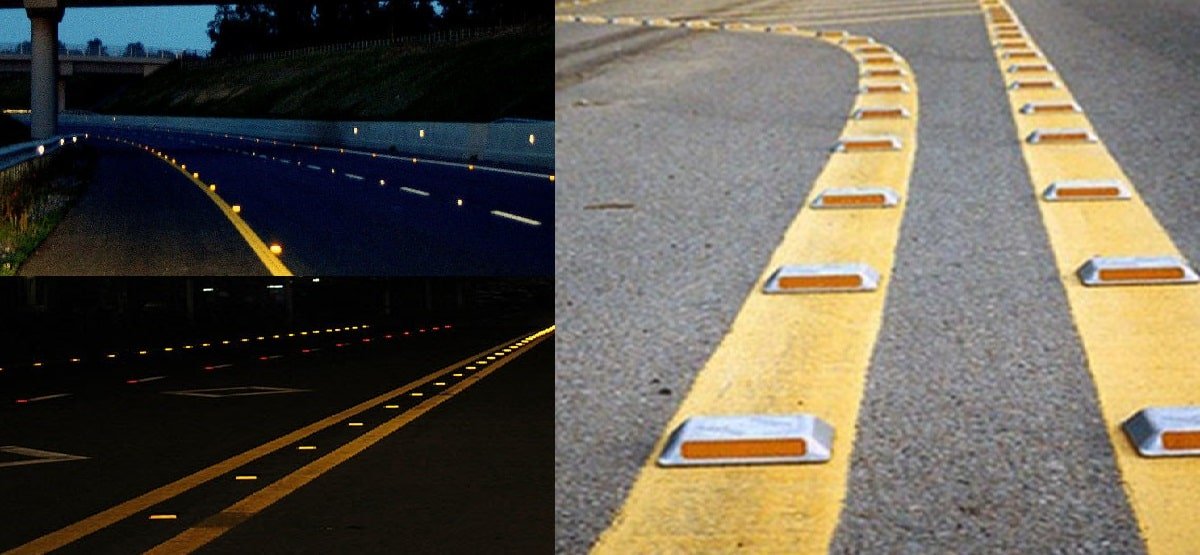
Road Delineators
Road delineators is provide visual assistance to drivers about the alignment of a road ahead, especially at night.
Reflectors are used on delineators for better nigh visibility.
Three types of Road delineators:
- Roadway Indicators
- Hazard Markers
- Object Markers
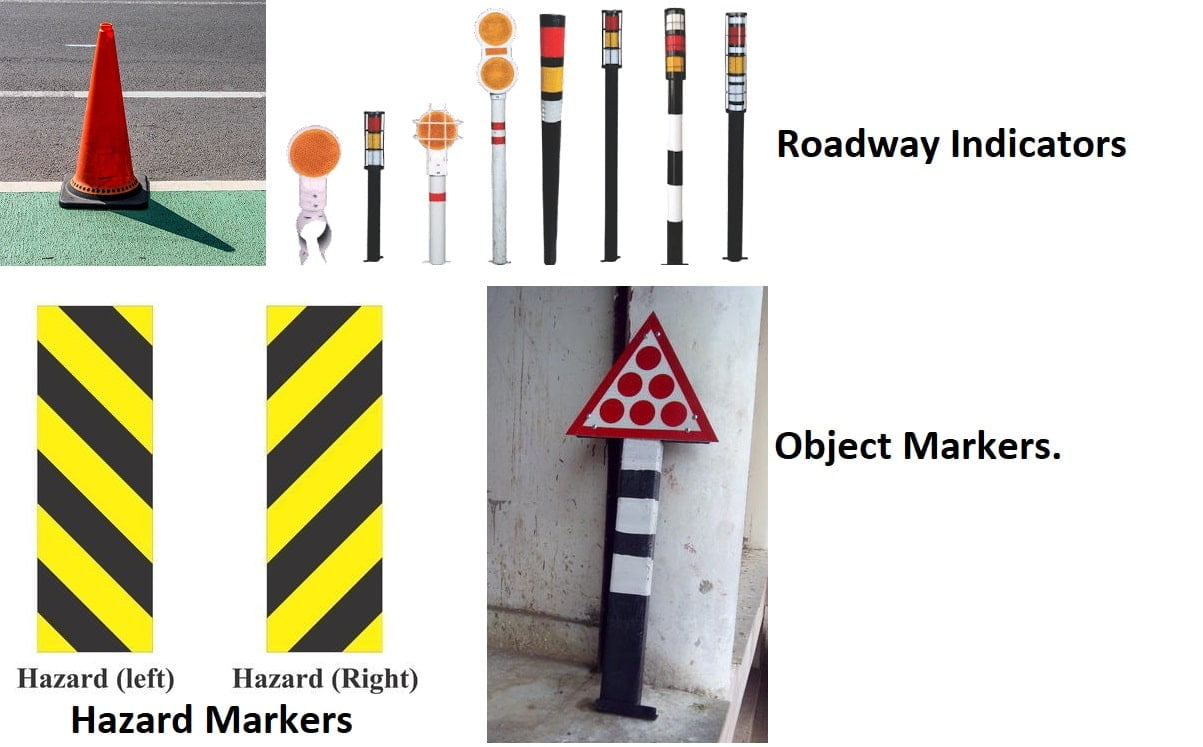
Great information to teach the BE students